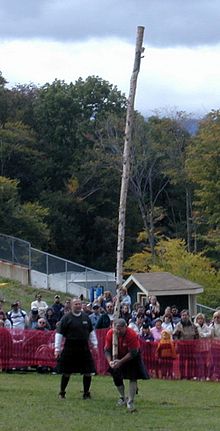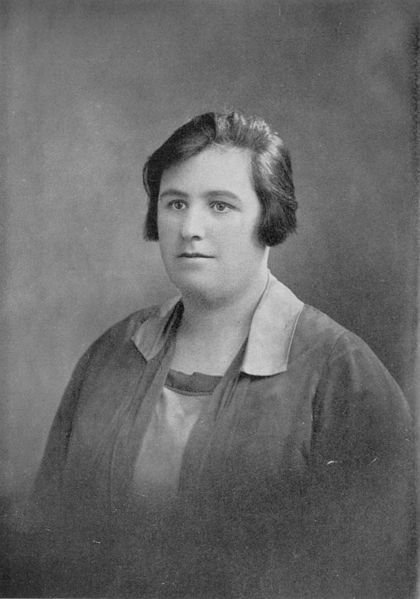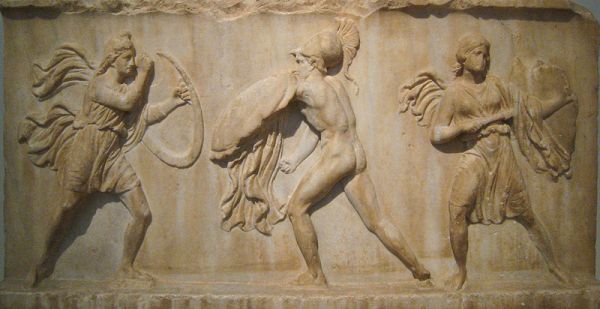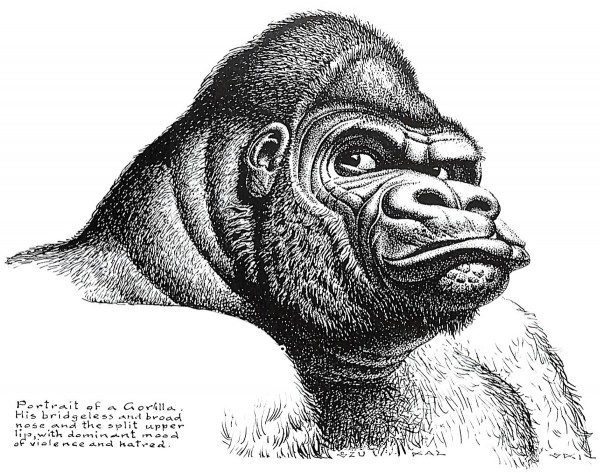by Ben Steelman

He
was one of the top European best sellers of the late 1800s and early
1900s and was once taken seriously, but not too many people read
Gabriele D’Annunzio now.His florid style has gone out of fashion (although Ernest Hemingway
admired his war memoir “Notturno,” since he largely gave up the
classical allusions and the frou-frou and just told the story straight.)
He was a poet, novelist and playwright, yet among his contemporaries,
we’re more likely these days to recognize Luigi Pirandell0.
Yet Lucy Hughes-Hallett, the British critic and cultural historian, thinks we all should know D’Annunzio.
Why? Because, basically, he invented fascism as we know it. The
parades, the black shirts, the cult of the leader, the spectacles, the
military rigamarole — D’Annunzio started it all in a now-forgotten
little city-state called Fiume.
All this was before Hitler; at the time, Benito Mussolini was still
wearing business suits. Both future dictators (and several others)
watched D’Annunzio and copied him. An Italian Fascist biography in fact
referred to him as “The John the Bsptist of Fascism.” For D’Annunzio,
that was a slap. He hated playing second fiddle to anybody.
Hughes-Hallett writes the strange tale in “D’Annunzio: Poet, Seducer
and Prophet of War” (Knopf, $35), one of the more intriguing of recent
biographies. It’s timely as we ponder the centennial of World War I.
Had D’Annunzio died before 1914, he would have been an amusing
literary footnote. As Oscar Wilde once said of himself, he seems to have
put his genius into his life and merely his talent into his work.
Born in 1863, the coddled oldest son of a south Italian mayor,
D’Annunzio was a literary prodigy. He was also a cad. At the age of 19,
he eloped with the daughter of a duke, only to abandon her a few years
later. Sitting in a cramped apartment with squalling babies was not
conducive to thinking higher thoughts. (He later wrote a novel in which
the hero murders his infant son, since the babe interfered with Papa’s
sex life.)
For decades, D’Annunzio was classed with the Decadents, an Italian
equivalent of Baudelaire, Oscar Wilde or Ronald Firbank. Unlike Wilde,
however, his instincts seem to have been exclusively, and obsessively,
heterosexual.
He never actually divorced his duchess (though he almost never
provided for her support), yet he passed through a dizzying string of
affairs. There was a long liaison with the great actress Eleanora Duse,
possibly one with the dancer Isadora Duncan, plus a long string of rich,
lonely and neglected Italian countesses and princesses with complaisant
or neglectful husbands.
The odd thing was, D’Annunzio was as unlikley a ladies’ man as the
Howard Wolowitz character on “The Big Bang Theory.” He was short, he had
bad teeth, and he went bald early. Liane de Poligny, a celebrated
French courtesan of the era, described him as “a frighful gnome with
red-rimmed eyes and no eyelashes, no hair, greenish teeth (and) the
manners of a mountebank.”
Liane was the sort of lady who checked her beaux’s bank accounts
first, and D’Annunzio, who was perpetually broke, held no appeal for
her. For others, ah … The secret seems to have been the voice. He was an
amazing speaker, smooth, hypnotic. Walter Starkie, a Briton who
witnessed one of his speeches, said he played his audience “as a supreme
violinist does upon a Stradivarius.”
Before 1914, though, this eloquence had no real point. D’Annunzio was
an aesthete who surrounded himself with damask curtains, huge
libraries, marble curios, exquisite little objets d’art and, of course,
the finest tailored wardrobes. He made millions from his writings but
nevertheless was constantly in debt, dodging creditors and process
servers. At one point, he had to flee Italy for five years to avoid
arrest.
His crassness matched his incompetence with money. Once Duse
presented him with a large sum of money to pay for his children’s
schooling. Instead, D’Annunzio, a fox-hunting enthusiast, used the cash
to buy a horse.
Then came the Great War.
Before then, D’Annunzio had been a political dilettante. Once he ran
for Italy’s parliament on the platform of “the politics of poetry.” He
was actually elected but then almost never showed up for sessions to
show his contempt for the grubby political process. A disciple of
Nietzsche, he regarded
himself as above the mere mob and normally paid them no heed.
Once his beloved France was attacked, however, D’Annunzio changed.
Suddenly, he became a fiery, almost apocalyptic orator, rallying the
youth of the Mediterranean to fight against the Teutonic barbarians. He
writings had always had a Poe-like attraction to death; now he preached
the glory of dying for the fatherland.
In particular, he returned to Italy and began to attack the
weaklings, the cowards, the poltroons in the Italian government who
insisted on sticking to Italy’s treaty of neutrality with Germany and
the Austro-Hungarian empire. Now, he adopted the cause of “Irredentism,”
the recovery of Italian lands still in Austrian hands. (His definition
of what was “Italian” was broad, including much of the old Venetian
empire, which would have covered much of the Balkans.)
The Giolitti government favored peace, as did a majority of Italians,
according to the polls of the day. Hughes-Hallett credits D’Annunzio
with tipping the scales and pushing Italy into a war that would cost it
at least half a million war dead, plus another half million civilian
deaths from starvation, epidemic and war-related causes.
Then, D’Annunzio did an amazing thing. He enlisted. At first the high
command used him as a sort of mascot, sending around to serve rousing
speeches to the troops.
Yet D’Annunzio (a lifelong physical fitness nut who’d fought a few
duels) did more. He rode along on torpedo-boat raids on Austrina-held
ports. He rode flights over enemy territory, dropping first propaganda
leaflets, then bombs. These climaxed with a daring air raid on Vienna,
the capital of the Austrian empire, itself. By the war’s end, D’Annunzio
— who’d made himself something of an expert on military aviation — was
commanding whole bomber squadrons. This, from a man who was well past 50
when hostilities broke out.
Imagine if Oscar Wilde had lived, had joined the RAF and wound up
dueling the Red Baron in the skies over France. That was the equivalent
of what D’Annunzio did. Even Hemingway, who considered him a blowhard
and a “jerk,” nevertheless conceded he was brave.
Then, to paraphrase the old BBC parody, tragedy struck — peace broke
out. Covered with medals, D’Annunzio sank into one of his periodic funks
and retreated to his apartments in Venice and the arms of a harem of
paramours.
Fortunately, an opportunity presented itself. Despite its staggering
losses, Italy reaped almost no territorial gains from the peace
conference. Most of the land it coveted wound up in the newly created
kingdom of Yugoslavia.
Thus, on Sept. 12, 1919, riding in a red Fiat sports car, D’Annunzio
sped into Fiume, a small port city on the Adriatic, with a majority of
Italians in its population but in territory technically assigned to
Yugoslavia. With about 2,000 demobilized Italian soldiers (accompanied
by some who deserted their units), he seized Fiume and set up a
“Republic” (later reclassified a “Regency” out of respect to Italian
monarchists), pending Fiume’s annexation by Italy.
He held onto Fiume, as de facto dictator, for some 15 months. And
while the city, for a while, seemed a refuge for every freak and loon in
Europe — anarchists, syndicalists, nudists, yoga enthusiasts — it was
here that D’Annunzio invented fascism.
He came up with all the trappings: The mass marches, the “politics of
spectacle,” the black uniforms, the speeches, the contempt for
democratic or legislative niceties, the glorification and imitation of a
supposed Roman past. He even adapted the title of “Duce,” years before
Mussolini.
D’Annunzio drew up a constitution that was radical in some respects
(absolute equality between men and women was supposed to be guaranteed)
but which turned the economy into a system of “corporations” or guilds —
the essence of what would become Italian fascism.
More ominously, D’Annunzio stood by while his barely disciplined
troops and police targeted ethnic minorities and practiced a crude early
version of ethnic cleansing. Some sources claim his thugs started the
fascist practice of dosing opponents with castor oil.
Eventually, an embarrassed Italian government — which had dithered,
fearing its army would disobey — ran D’Annunzio out. But by then, the
damage was done. As the Italian Communist Angelo Trasca wrote,
D’Annunzio (who had often been accused of plagiarism) became “the victim
of the greatest piece of plagiarism the world has ever seen.”
In 1922, Mussolini — now the Duce, now in black-shirted uniform — led
a “column” of fascists and disconteted veterans on a march into Rome to
seize power. His Italy became Fiume writ large. There’s evidence Adolf
Hitler paid attention.
As for D’Annunzio, he retreated to his estate, which he converted
into a monument to his ego, and kept his mouth shut. Afraid the hero of
Fiume would cause trouble, Mussolini paid his bills (which were
considerable), saw that he was created a noble and showered him with
little gifts, including the front half of battleship, big guns and all,
which was installed on his proprety complete with a crew.
Increasingly decrepit, likely addicted to cocaine and probably
suffering from syphilis, D’Annunzio lingered on until his death in 1938.
Hughes-Hallett — who has written a well-regarded biography of
Cleopatra — tells the story with gusto, at times narrating the action in
present tense, rather like Thomas Carlyle in his hstory of the French
Revolution.
And then there are the odd little moments of synchronicity when other
characters wander onto the stage. At an air show in Brescia before the
war, when D’Annunzio took his first airplane ride. we spot Franz Kafka
and Max Brod, stopping by on a vacation from Prague. And we catch a
glimpse of Marcel Proust, glancing out the windows of his cork-lined
apartment to admire the beauty of the planes dogfighting over Paris.





































